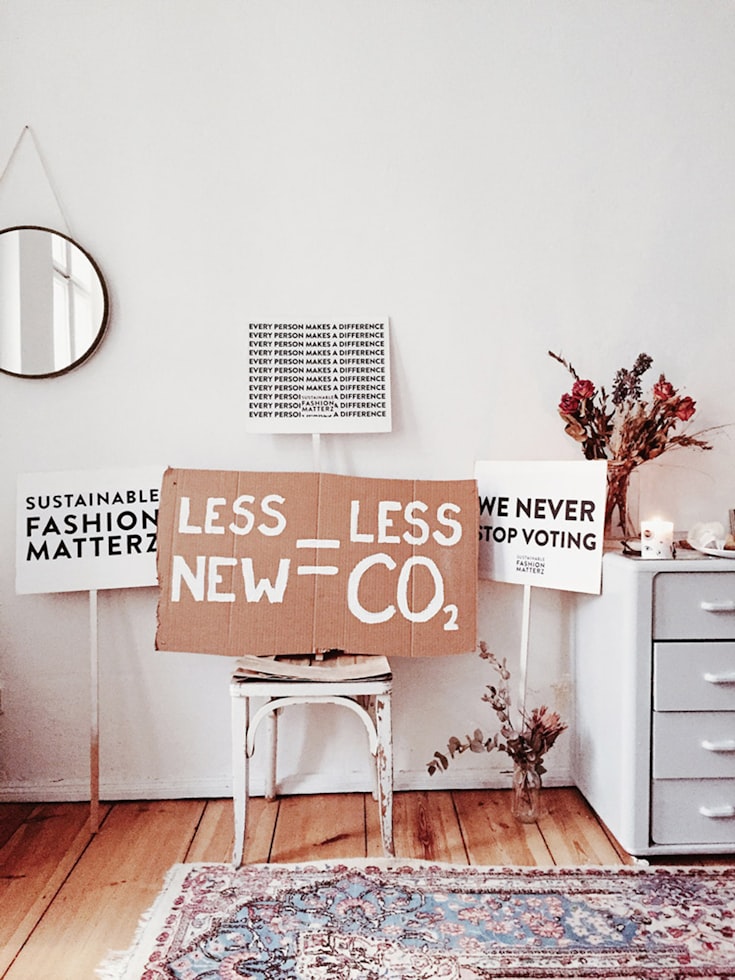The fashion industry is one of the largest polluters globally, and the issue of sustainable fashion has taken center stage in recent years. Consumers are becoming more socially responsible and trying to make a positive impact on the environment through their purchases, and “Eco-Friendly Clothing” is a step in that direction. Eco-friendly clothing aims to reduce the impact of fashion on the environment while also providing sustainable alternatives for consumers. But what exactly is eco-friendly clothing, and how does it help reduce the fashion industry’s impact on the environment?
Eco-Friendly clothing is a step beyond just using organic cotton; it involves a more comprehensive approach to sustainable fashion. It goes beyond the fabrics used, encompassing every process involved in manufacturing, packaging, and distribution of the product. The critical factors to consider while making eco-friendly clothing are the type of fibers used, the manufacturing process, the use of energy-efficient machinery, and sustainable packaging. It’s about ensuring the longevity of the product while trying to reduce the environmental impact.
Eco-Friendly clothing designers use sustainable fabrics made from organic or recycled materials. While cotton is very popular in the industry, it’s essential to note that the traditional methods used to cultivate it can be harmful to the environment. The use of pesticides, fertilizers, and other chemicals can degrade the soil and the water table. This is where the use of organic cotton or bamboo comes in. These sustainable raw materials provide a natural alternative without the negative environmental impacts.
Eco-Friendly clothing is durable and long-lasting, which means that you don’t have to purchase new clothes every season. The fashion industry gets a level of durability by creating clothes that only last a couple of seasons, leading to increased consumption and waste. Eco-friendly clothes are usually designed to withstand multiple washes and continue to look and feel great. In addition, the manufacturing and packaging process discourages fast fashion and thus reduces the carbon footprint of the clothing industry.
In addition to benefiting the environment, eco-friendly clothing also addresses issues of social responsibility. Often, the people who make our clothes work in unsafe conditions with low wages. Eco-friendly clothing brands ensure that they work with manufacturers that provide good working conditions and fair pay. By supporting these brands, we can help reduce social injustices created in the production process.
In conclusion, Eco-friendly clothing is a step in the right direction towards sustainability in the fashion industry. It’s about being responsible for the environment while supporting brands that prioritize social responsibility. It’s about making a difference in the world by making conscious choices in our consumer behavior. By choosing eco-friendly clothing, we can all make a positive impact on the environment while looking and feeling great.
As environmental awareness grows, more and more people are looking for ways to reduce their carbon footprint in every aspect of their lives, including their fashion choices. Eco-friendly clothing is one way to make a difference while keeping your wardrobe stylish and up-to-date. Here’s what you need to know about eco-friendly clothing.
What is eco-friendly clothing?
Eco-friendly clothing is made from materials that have a lower impact on the environment compared to traditional fabrics, such as cotton or polyester. These materials can include organic cotton, hemp, bamboo, recycled polyester, and other sustainable options. Eco-friendly clothing also considers the entire lifecycle of the garment, from production to disposal, to minimize its impact on the environment.
Why choose eco-friendly clothing?
Choosing eco-friendly clothing helps reduce the environmental impact of the fashion industry, which is known to be one of the most polluting industries in the world. Traditional fabrics like cotton require a lot of water, pesticides, and herbicides to grow, while synthetic fabrics like polyester are made from non-renewable resources and take a long time to decompose. With eco-friendly clothing, you can reduce your carbon footprint and support sustainable production practices.
Where to find eco-friendly clothing?
You can find eco-friendly clothing in many places, including online shops, physical stores, and even major fashion brands are starting to incorporate sustainable options in their collections. Look for certifications like GOTS, Fair Trade, or OEKO-TEX Standard to ensure that the clothing you purchase is sustainable and ethically made.
How to care for eco-friendly clothing?
Eco-friendly clothing may require special care to maintain their quality and longevity. Check the care labels and follow the instructions carefully. Wash your clothes in cold water instead of hot, use eco-friendly detergents, and avoid using a dryer when possible. Air-drying your clothes can also help reduce energy consumption and prolong their lifespan.
What are the benefits of eco-friendly clothing?
Eco-friendly clothing has many benefits, including reducing water consumption, supporting sustainable and ethical production practices, reducing carbon emissions, and promoting a circular economy. By choosing eco-friendly clothing, you’re not only making a positive impact on the environment but also supporting a more sustainable and ethical fashion industry.
What are the challenges of eco-friendly clothing?
Eco-friendly clothing may come with some challenges, such as limited availability, higher prices, and a lack of variety compared to traditional clothing. However, as more consumers demand sustainable options, the fashion industry is responding with more eco-friendly options at affordable prices.
Summary
Eco-friendly clothing is a more comprehensive approach to sustainable fashion than simply using organic cotton. It involves all aspects of manufacturing, including the use of sustainable fabrics made from organic or recycled materials, energy-efficient machinery, and sustainable packaging. Eco-friendly clothing is designed to be durable and long-lasting, which addresses the issue of fast fashion and reduces the carbon footprint of the clothing industry. It also promotes social responsibility by ensuring good working conditions and fair pay for manufacturers. By choosing eco-friendly clothing, consumers can make a positive impact on the environment while supporting brands that prioritize sustainability and social responsibility.

FAQ
What is eco-friendly clothing?
Eco-friendly clothing, also known as sustainable clothing, is clothing that has been made with environmentally responsible materials and production practices. This clothing often uses organic or recycled materials, avoids harmful chemicals, and ensures the safety and fair treatment of workers who produce the clothing. Eco-friendly clothing also takes into account the entire lifecycle of a garment, from its creation to its disposal, and aims to minimize its impact on the environment.
Why is eco-friendly clothing important?
Eco-friendly clothing is important for several reasons. First, the fashion industry is one of the largest contributors to environmental pollution and climate change, and eco-friendly clothing helps to reduce this impact. Additionally, eco-friendly clothing is often made with materials that are safer for both the environment and the people who wear them. Finally, supporting eco-friendly clothing brands and practices can help to promote sustainable practices and support ethical working conditions for garment workers.
How do I know if a clothing brand is eco-friendly?
There are several ways to determine if a clothing brand is eco-friendly. Look for certifications like GOTS (Global Organic Textile Standard) or Oeko-Tex, which indicate that a brand meets certain environmental and social standards. Check the fabric content of clothing, and opt for materials like organic cotton, hemp, or recycled fibers. Research the brand’s production practices, and look for transparency on their website about their environmental and social impact. You can also look for brands that prioritize sustainable packaging and shipping practices.
Is eco-friendly clothing more expensive?
Eco-friendly clothing can be more expensive than fast fashion or conventional clothing, but this cost is often justified by the use of higher-quality materials and more ethical production practices. Additionally, investing in high-quality, sustainable clothing can be more cost-effective in the long run, as these items tend to last longer than fast-fashion pieces. There are also eco-friendly clothing brands that strive to keep prices affordable, so do your research and find brands that align with your values and budget.




